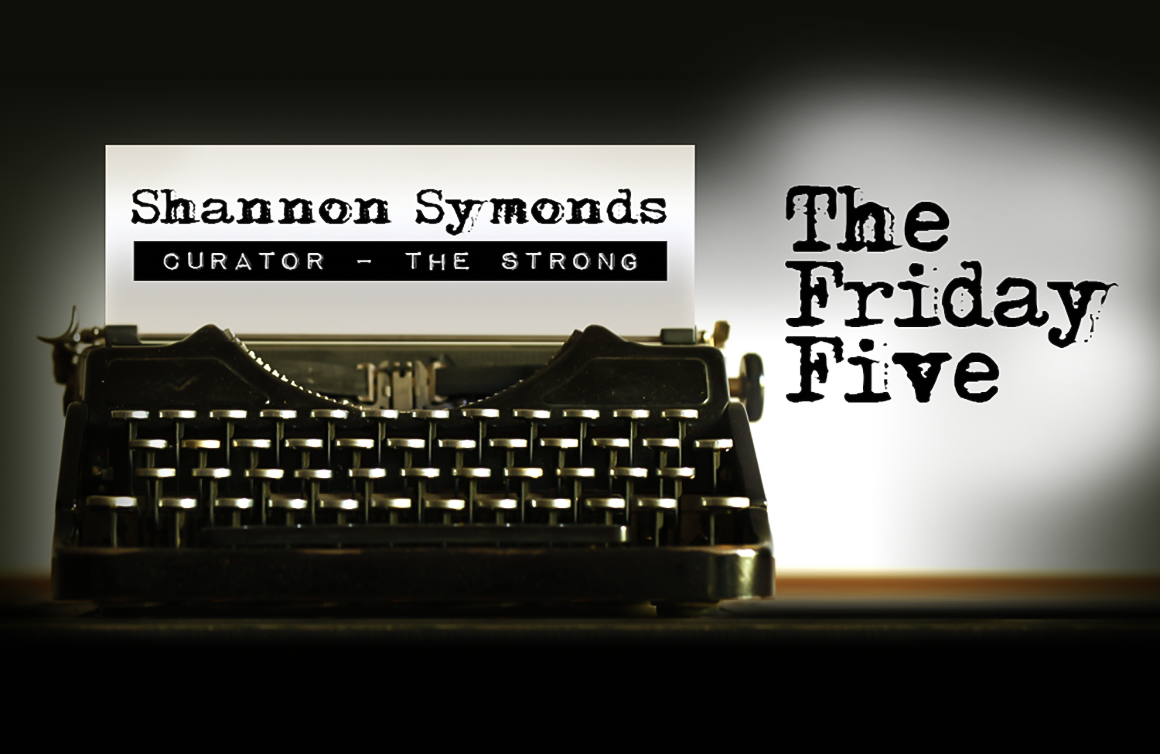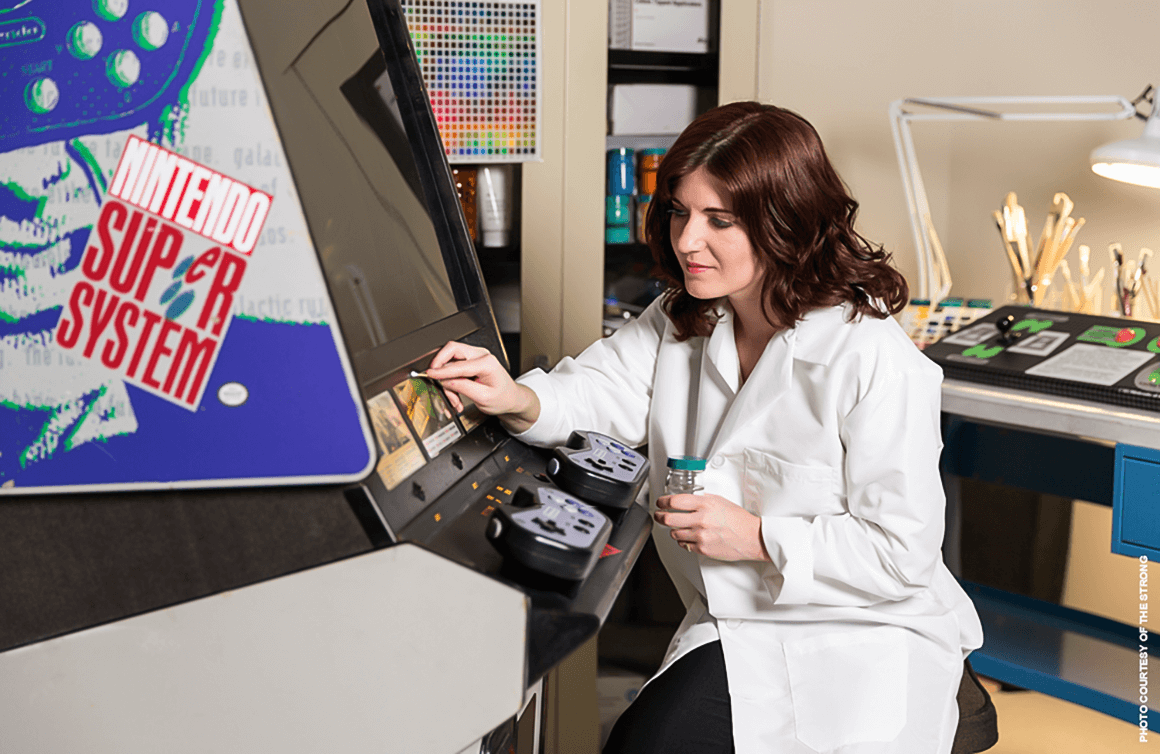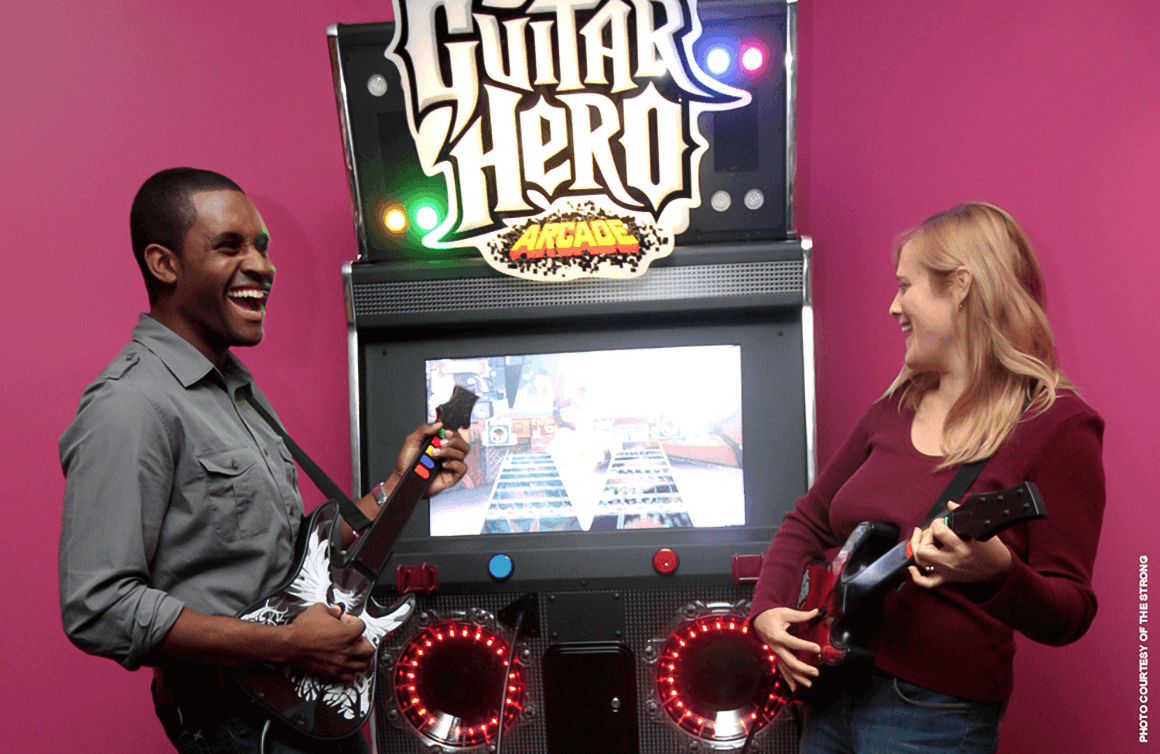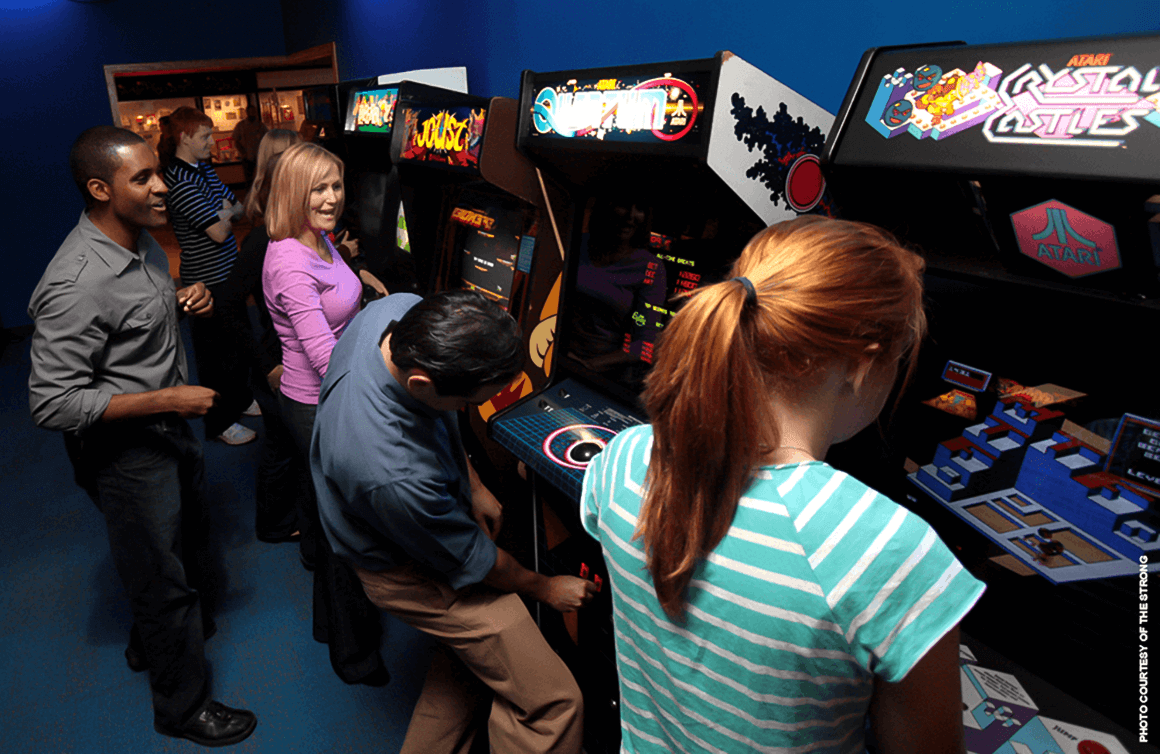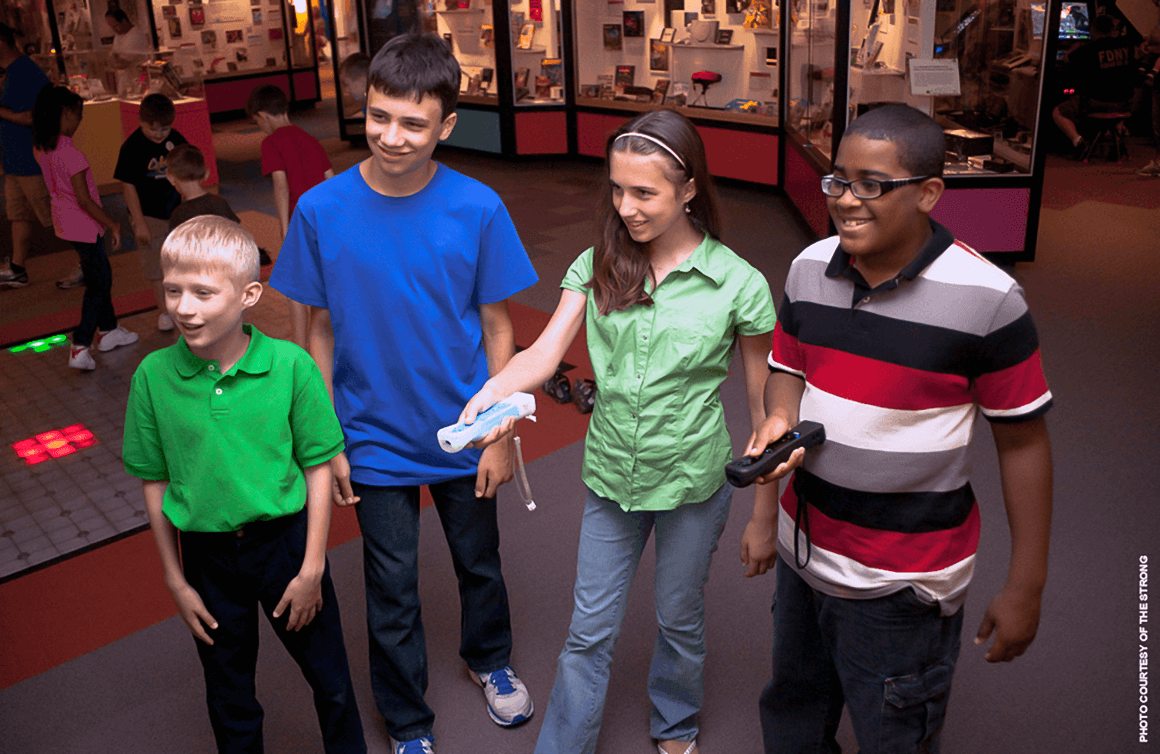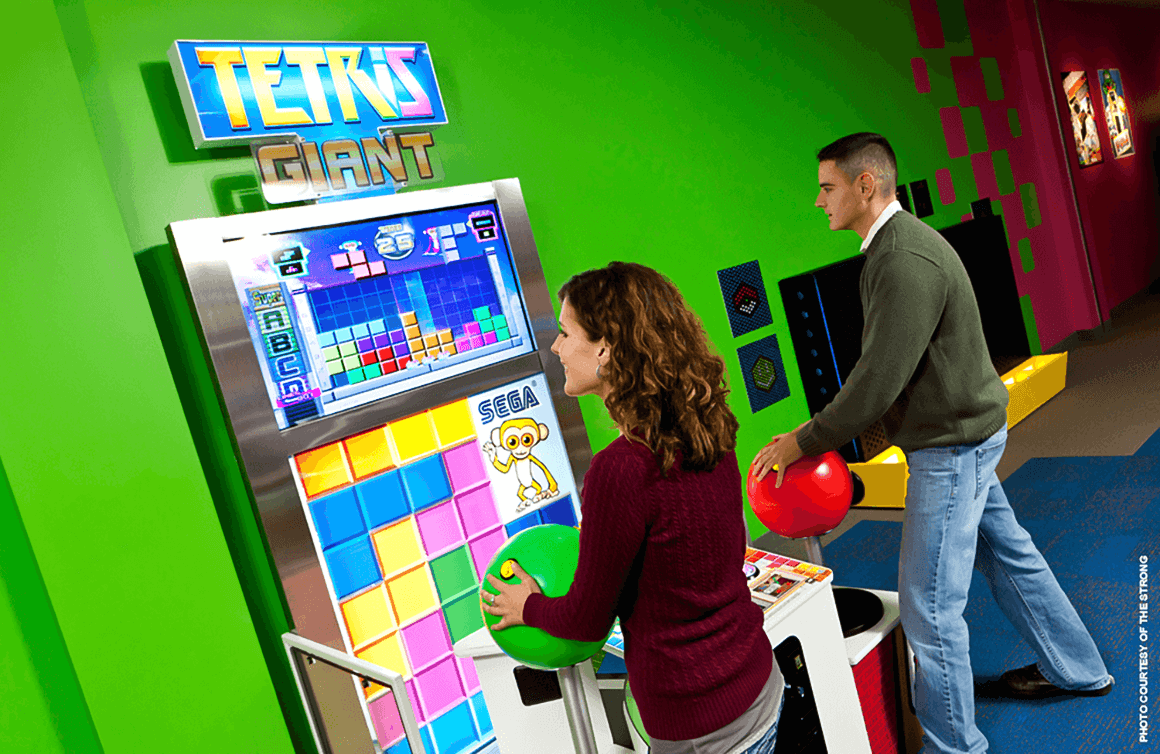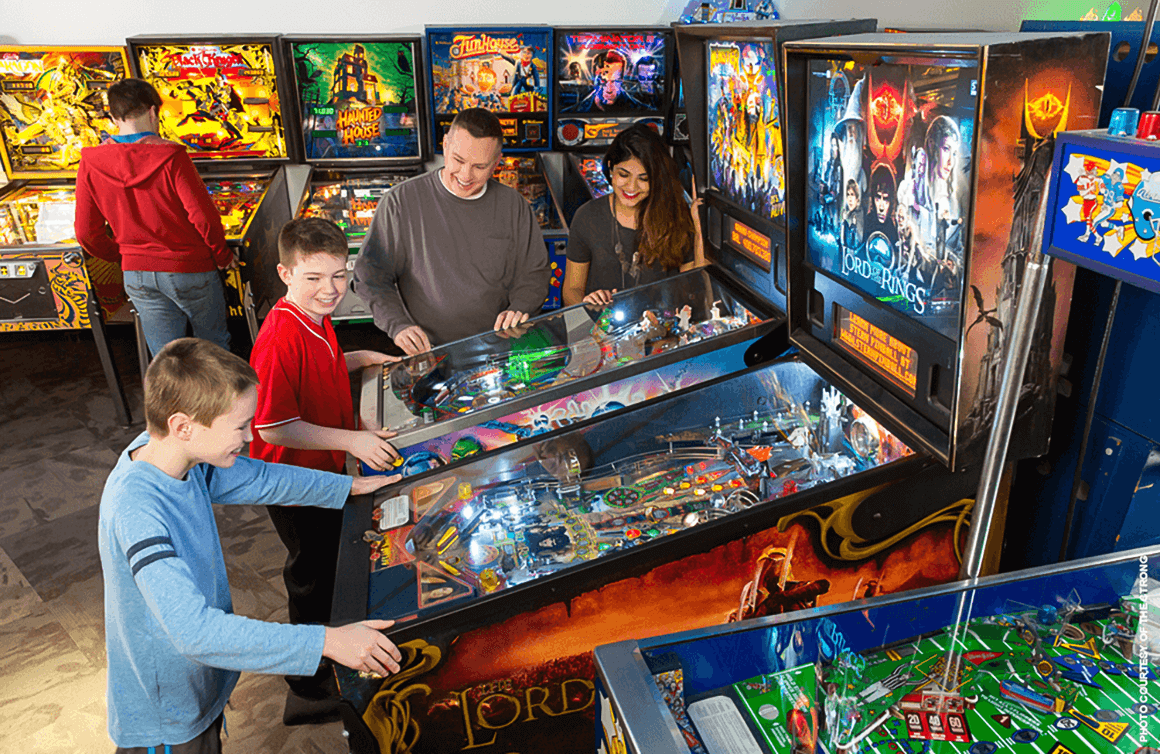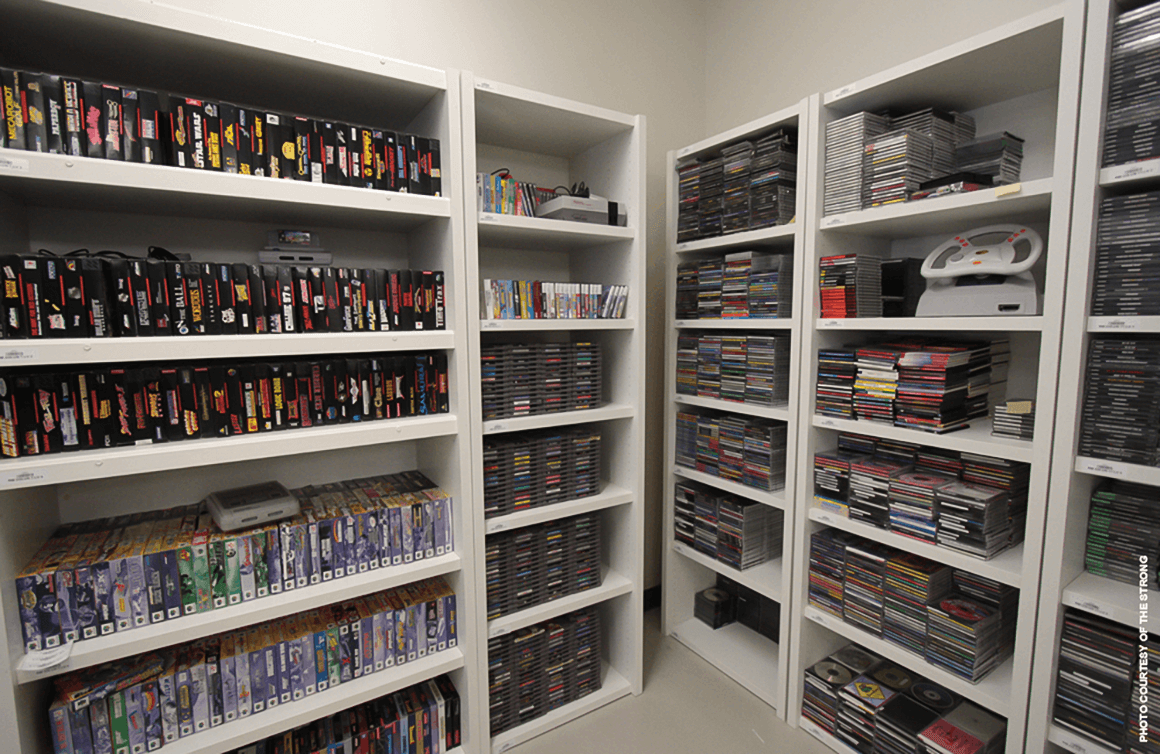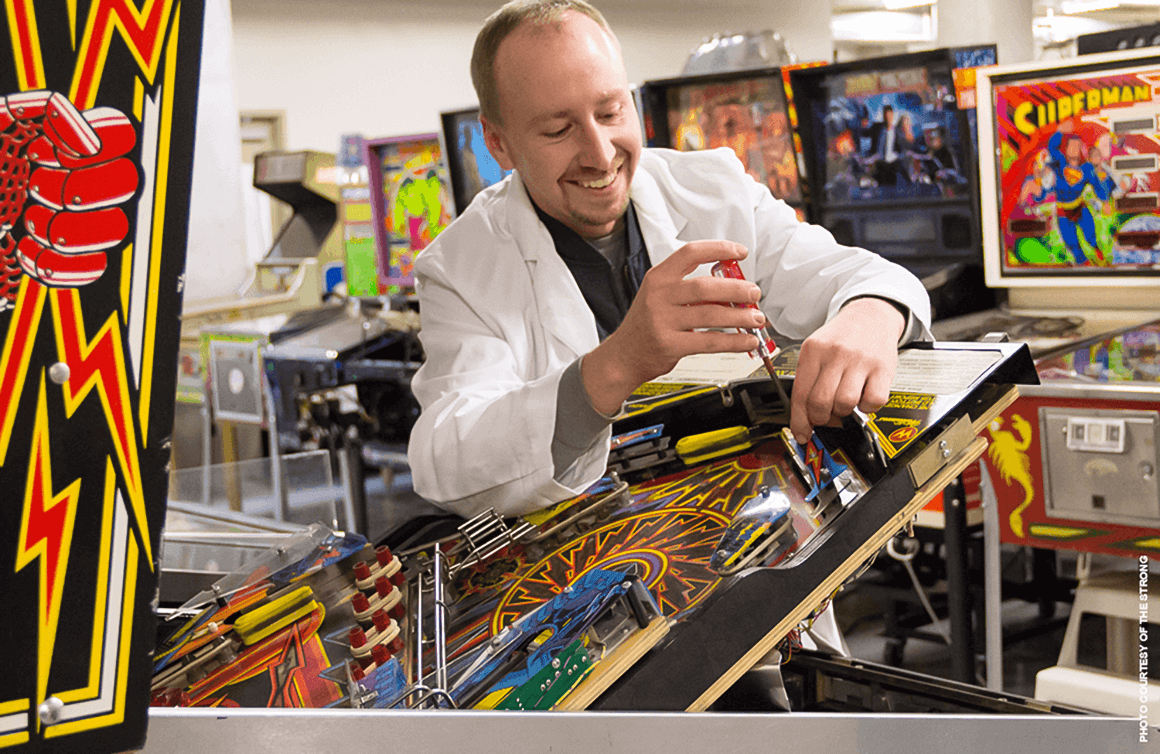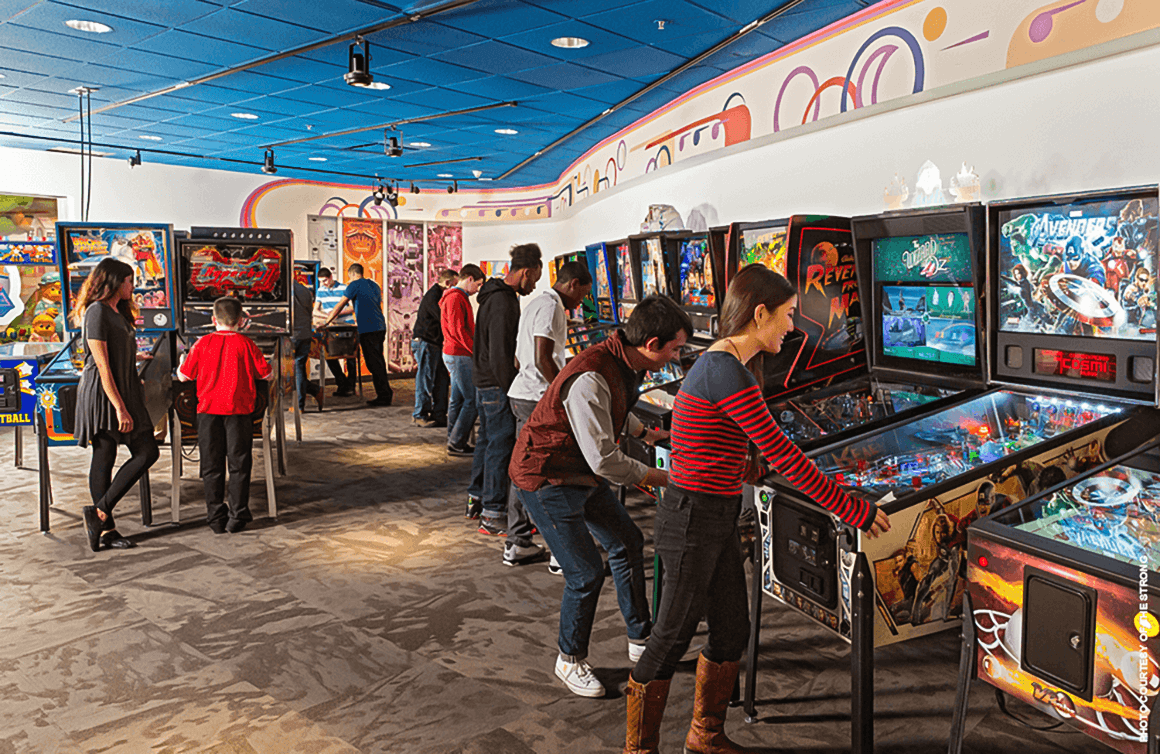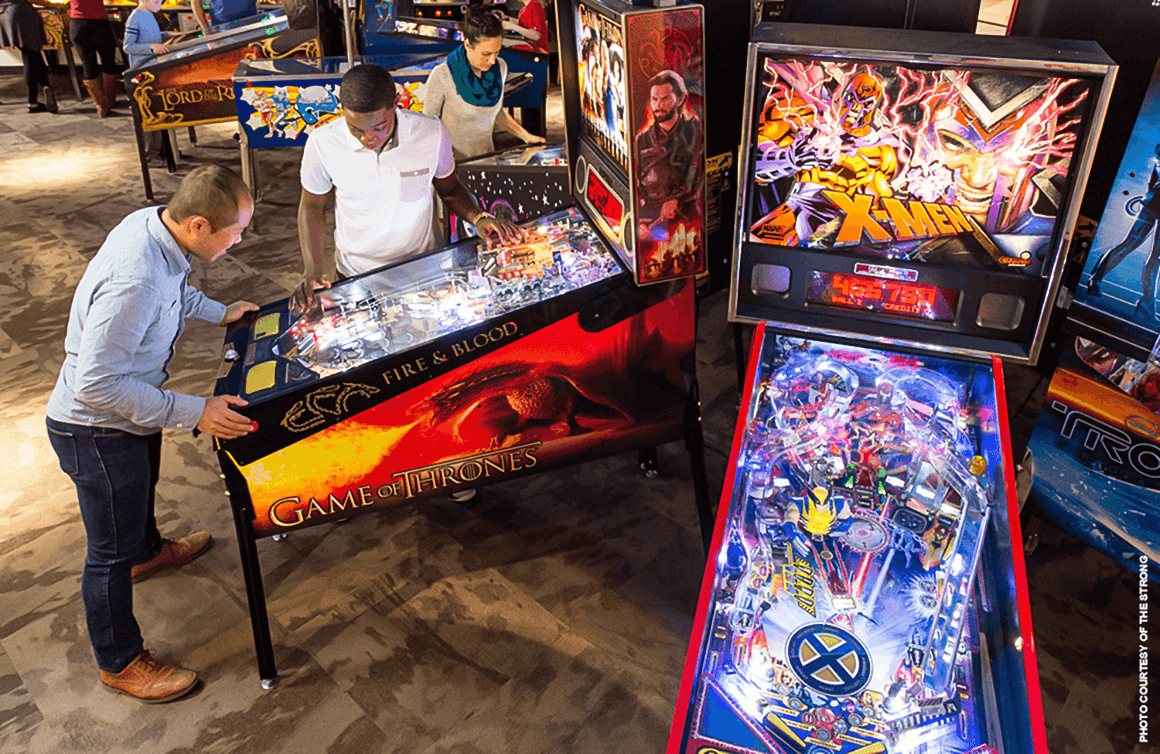Tell us about your role at The Strong.
As Curator for the International Center for the History of Electronic Games, I curate, preserve, and interpret the collection. I work to grow the collection at The Strong by identifying and closing any gaps we have in our existing collections.
I have a Master’s Degree in History with a focus on Japanese studies. I assumed I was going to get my PhD and teach, but realized early on that I wasn’t cut out for teaching. I fell in love with public history during my internship at The Strong. When an associate curator position became available, it felt like everything came together – I’d found my niche. I moved into the associate curator role and then into the role of curator.

What drove the creation of the International Center for the History of Electronic Games?
The Museum is the foremost expert on the history of play. Our founder, Margaret Woodbury Strong, was a collector of dolls and we have a wonderful collection because of her passion. We also have games and toys. When we ask ourselves, “what does play mean?”, the answer changes with the times. A few years ago, we had fewer than 100 electronic games. We had the most basic objects, including a Nintendo Game Boy, an Atari 2600, and two arcade cabinets. Now, video games are a huge phenomenon. Electronic games have changed how people play and with mobile devices, an even greater number of people play digital games. You may not be a movie aficionado, but nearly everyone watches movies. It’s the same with games: you may not identify as a gamer but you probably play electronic or digital games. We realized those games weren’t well represented at The Strong, so building that collection became a priority. We now have more than 60,000 games and related materials, along with 900 linear feet of archive materials.

What can visitors to The Strong expect to see and experience at the Center?
We have three main areas within the Museum for electronic games:
eGame Revolution was our first exhibit. We put together a timeline of how video games began and grew to become a play phenomenon. It demonstrates how games impact society and the social aspects of gaming.
Pinball Playfield is chock full of pinball machines available for hands-on play. There are also games behind glass, such as Humpty Dumpty, the first pinball machine to incorporate flippers.
Our third section is Women in Games. This exhibit was slated to close in May 2019, but because of its popularity we are keeping it open. The eGame Revolution and Pinball Playfield exhibits feature many male contributors to the gaming industry. It’s partly a reflection of the times, but as the industry grew, more women became involved. We want to highlight the contributions of pioneers such as Carol Shaw and her contemporaries.

Why is it important to highlight the contribution of women in the industry?
It’s great timing. There is a big push to get more children, particularly girls, involved with STEAM-related activities. There are more females playing electronic and digital games and more women characters within games. Women contribute to game production in many different ways; as developers, graphic artists, musicians, voice actors, and female characters. It’s a story that needs to be told.

What’s next from the International Center for the History of Electronic Games?
The Strong is undergoing a significant expansion and with that, the Center will grow. We are creating an immersive experience to show visitors the history and impact of the industry. This experience will feel like a game itself. We’re expanding our World Video Game Hall of Fame, now in its fifth year. The expansion gives us the opportunity to invite game designers and others in the industry to donate documentation and source material so we can preserve that information and show visitors how games are created. People often associate museums with “old” objects; The Center takes a different approach.
Gaming is a bit of a black sheep in entertainment but it has become more respected over time. It’s similar to how rock and roll and early novels were initially perceived as a waste of time and disapproved of by previous generations. We want to bring new life and a fresh outlook to the world of gaming.

Visit The Strong to learn more about the International Center for the History of Electronic Games.

